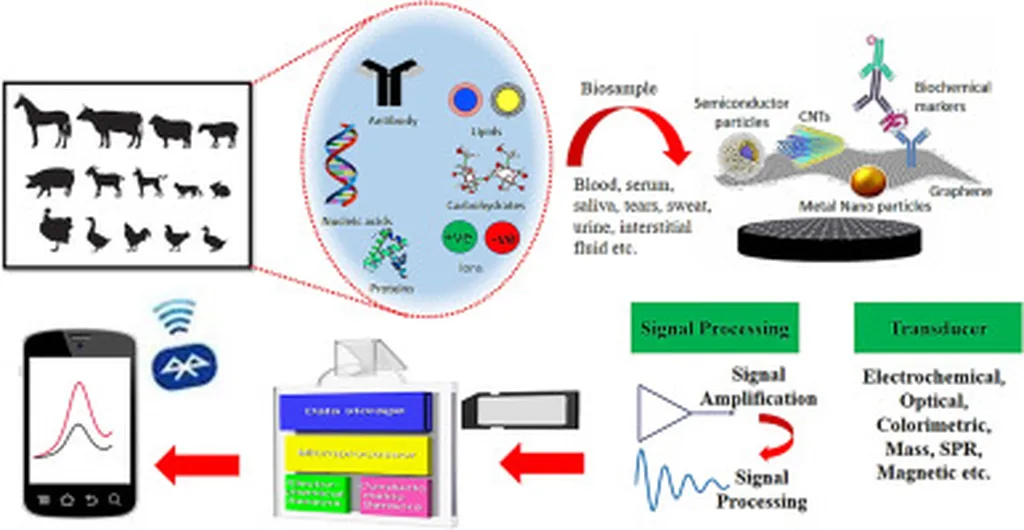In the realm of medical diagnostics, precision and sensitivity are paramount. Researchers have recently developed a groundbreaking aptasensor that promises to revolutionize the detection of C-reactive protein (CRP), a critical biomarker for inflammation, tissue damage, and infectious diseases. This innovation, published in *Scientific Reports*, could have far-reaching implications, including significant impacts on the agriculture sector.
The aptasensor, developed by Elham Fathi Ganje Lou and her team at the Department of Nanobiotechnology and Biomimetics at the University of Tehran, leverages fluorescence resonance energy transfer (FRET) to achieve unprecedented sensitivity. The system employs a 6-carboxyfluorescein (5-FAM) dye-labeled aptamer assembled on graphene oxide (GO). Initially, the fluorescence of the dye is quenched through FRET, creating a “turn-off” state. However, upon the addition of CRP, the aptamer binds to the protein, causing the dye to separate from the GO and recover the fluorescence signal, thus creating a “turn-on” state.
“This ultra-sensitive aptasensor demonstrates excellent selectivity and negligible interference from other substances,” said Fathi Ganje Lou. The aptasensor exhibits two linear ranges (33–82 fg/ml and 114–207 fg/ml) and an exceptional limit of detection (LOD) of 2.27 fg/ml, making it a significant advancement over existing methods.
The implications of this research extend beyond medical diagnostics. In the agriculture sector, early and accurate detection of diseases and infections in livestock can prevent outbreaks and improve animal welfare. The aptasensor’s ability to detect CRP with such high sensitivity could be adapted for veterinary use, enabling farmers and veterinarians to monitor and manage health issues more effectively. This could lead to reduced losses and improved productivity, ultimately benefiting the agricultural industry.
Moreover, the simplicity and cost-effectiveness of the aptasensor make it a promising tool for point-of-care diagnostics. Its potential for practical applications in clinical settings is further highlighted by its successful testing on real positive and negative serum samples. “Our proposed turn-off-on aptasensor-assembled GO offers a more extensive detection range and significantly higher sensitivity compared to other methods,” added Fathi Ganje Lou.
The research published in *Scientific Reports* by lead author Elham Fathi Ganje Lou from the Department of Nanobiotechnology and Biomimetics at the University of Tehran, showcases the potential of this innovative technology. As the agricultural sector continues to seek advanced diagnostic tools, this aptasensor could pave the way for more efficient and effective disease management, ultimately contributing to a healthier and more productive agricultural landscape. The future of diagnostics is bright, and this research is a significant step forward in that direction.

